The ecommerce industry is huge—and it keeps growing. Global online sales have more than doubled between 2016 and 2020 and are expected to surpass $6 trillion by 2024.
That’s more than the GDP of all but the world’s two largest economies.
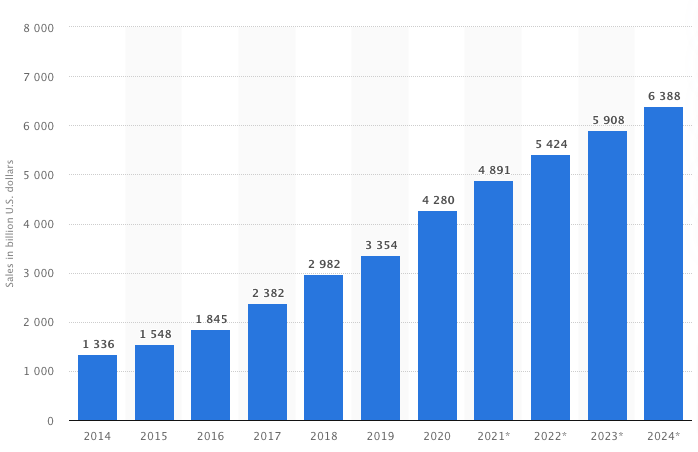
But ecommerce isn’t a license to print money.
There are an estimated 1.3 million ecommerce businesses in the US, of which roughly one-third are B2C brands selling physical goods. Of those, the overwhelming majority—about nine in 10—make less than $1 million a year from online sales.
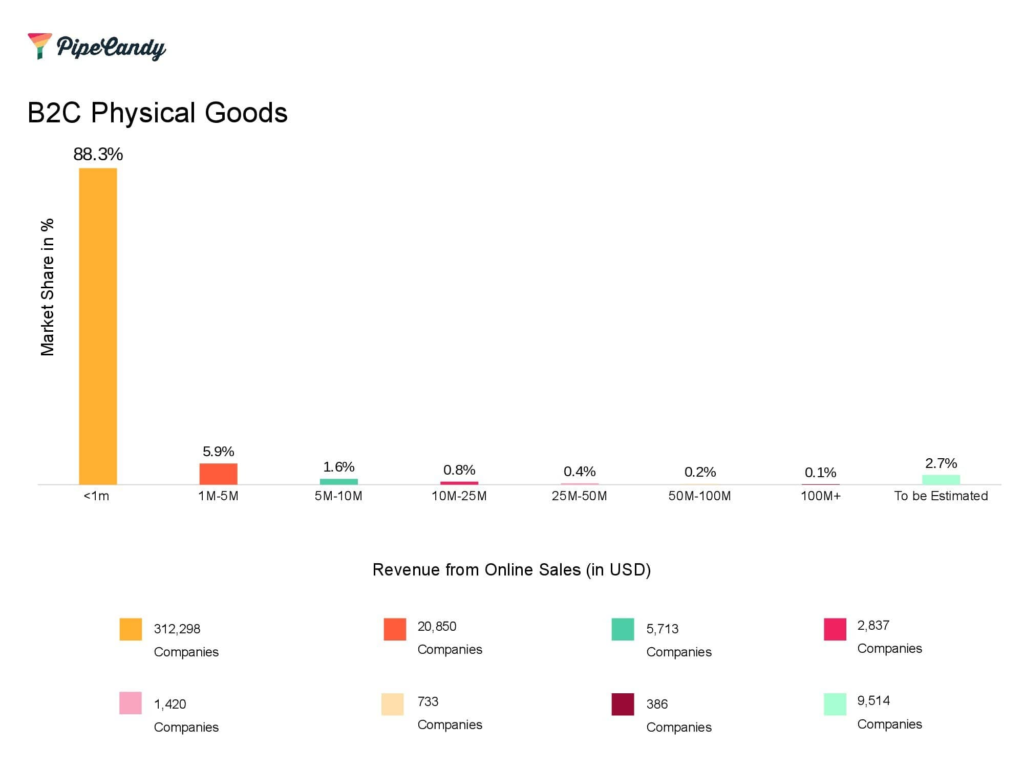
Many of these ecommerce businesses are struggling to get by, aren’t turning a profit at all, or are losing money hand over fist.
Those are the ecommerce brands that haven’t found the right niche.
Simply put, an ecommerce niche is a specific segment within a given market. For instance:
- Broad market: Selling bicycles
- Niche: Selling low-cost, refurbished racing bikes
Honing in on a niche is all about identifying less competitive market segments (ideally with excellent growth potential). Finding a good niche allows you to:
- Reduce your advertising and marketing costs;
- Build stronger relationships with customers; and
- Enjoy higher profit margins.
If you’re thinking of diving into the world of ecommerce yourself, check out these seven high-potential niches to help guide your future direction.

Table of Contents
1. Artisanal Pet Food
Pets aren’t just our faithful companions—they’re big business, too.
According to the American Pet Products Association, US pet owners spent a record-high $99 billion on their furry friends in 2020, covering everything from food to veterinary care. Meanwhile, pet spending in the UK rose every year between 2005 and 2019, with expenditure almost tripling over that period.
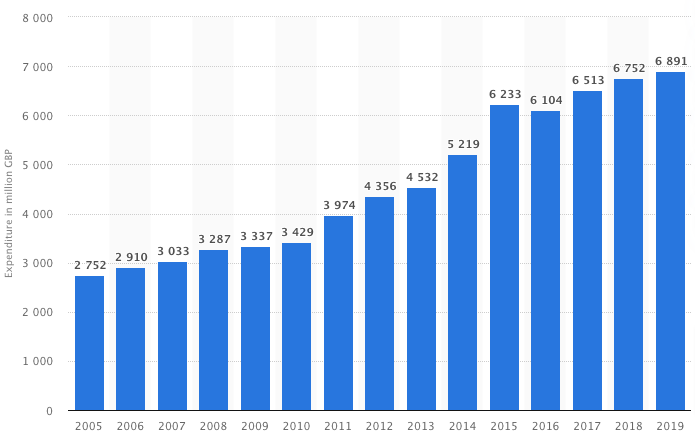
In other words, we love our pets, and we love spending money on them.
But “pet products” is a pretty broad market. How can we niche it down?
Well, we all want our pets to eat well and live long, healthy lives. That makes high-end, artisanal pet food a potentially valuable ecommerce niche.
Just take a look at how global search interest has climbed over the past five years for niche, pet food-related terms like raw dog food:
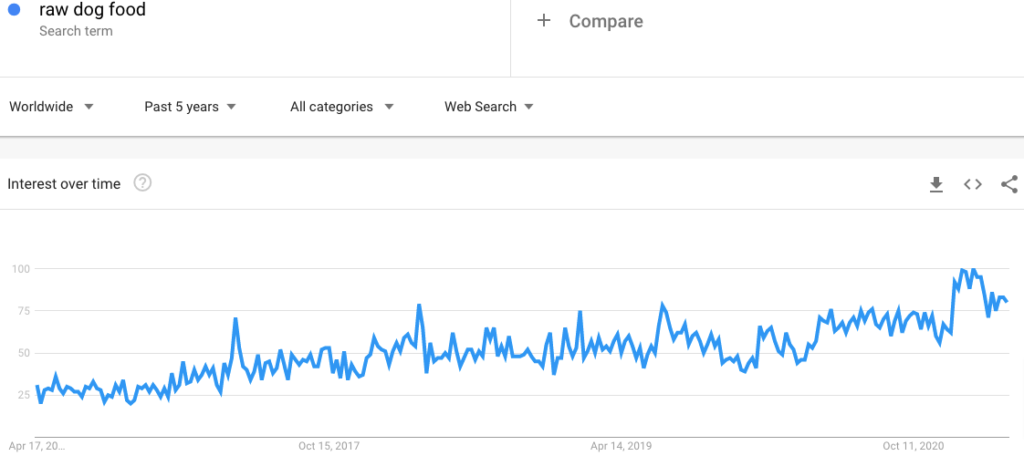
And urinary cat food (that is, food designed to mitigate the risk of urinary tract disease in cats):
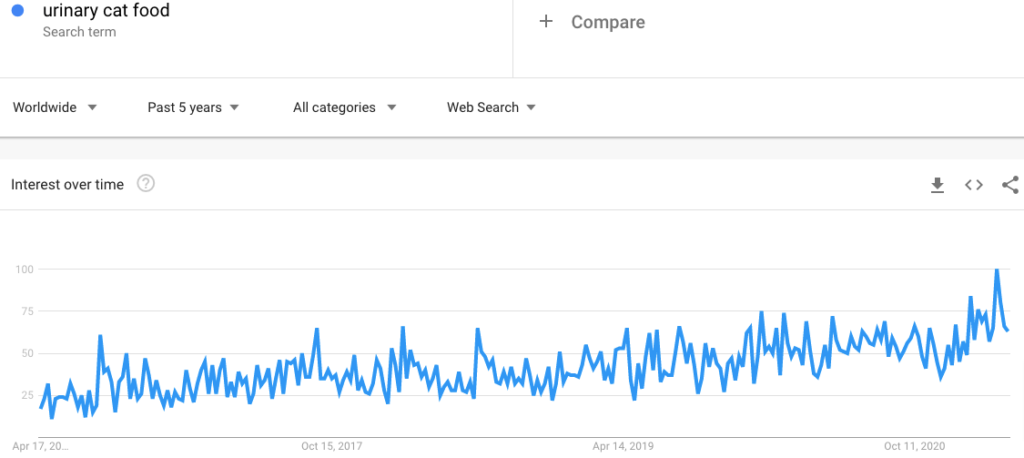
There’s even been an upturn in interest for CBD products aimed specifically at dogs—now that’s a really niche market—although sadly, this seems to have slowed down somewhat in recent months:
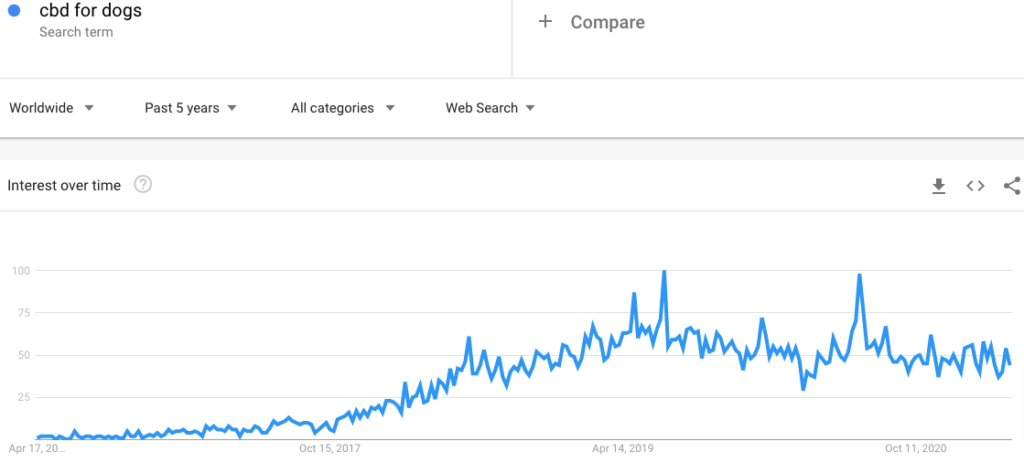
2. Alternative Milk
Veganism as a whole is something of a hot topic.
Taking the UK as an example, between 2014 and 2019, the number of vegans quadrupled to 600,000.
What’s more, there’s been a lot of interest from non-vegans in reducing consumption of animal products. For instance, 15 percent of UK consumers say they’ve cut their intake of eggs and dairy products during the coronavirus pandemic.
Significantly, consumers aren’t simply quitting dairy altogether—they’re looking for alternatives. And alternatives mean opportunities.
One of those opportunities is in alternative milk. In terms of global revenue, the market was valued at $16 billion in 2019, and it’s anticipated to reach $41 billion within the next five years, representing a compound annual growth rate (CAGR) of 16.7 percent between 2020 and 2025.
So it’s already a decent-sized market, and it’s got a ton of growth potential.
Almond milk is the number one milk alternative, but almonds are just a drop (of milk) in the ocean. There are numerous other milk substitutes available, giving retailers plenty of scope to niche down even further.
While almond milk is currently the market leader, it’s being rapidly caught by oat milk and soy milk, which has been consistently popular over the past five years:
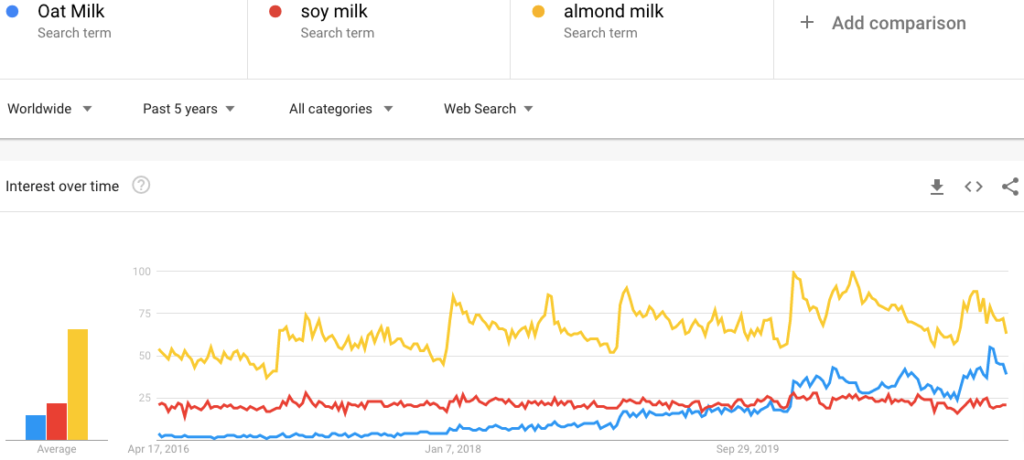
3. High-End Home Coffee Products
Coffee isn’t exactly the most original niche. With about two billion cups consumed every day, it’s the world’s favorite drink.
Unsurprisingly, there’s big money to be made from coffee. Revenue in the segment is expected to reach $436 billion in 2021, while the market is forecast to grow annually by 8.3 percent between now and 2025.
Obviously, you’re not going to produce your own coffee and instantly start competing with Nescafé or Jacobs Douwe Egberts. Those are multinational brands earning billions in revenue every year.
But there’s definitely scope for ecommerce brands to make money from coffee—you just need to find a gap in the market.
This brings me to my next niche: home coffee products.
If you love coffee, there’s a good chance you’re no longer content with “slumming it” on cheap, instant granules when you’re at home. You want to be able to brew a cafe-quality cup of joe yourself.
This is reflected by growing search interest in three coffee-related products over the past five years: coffee grinders, French presses, and coffee beans.
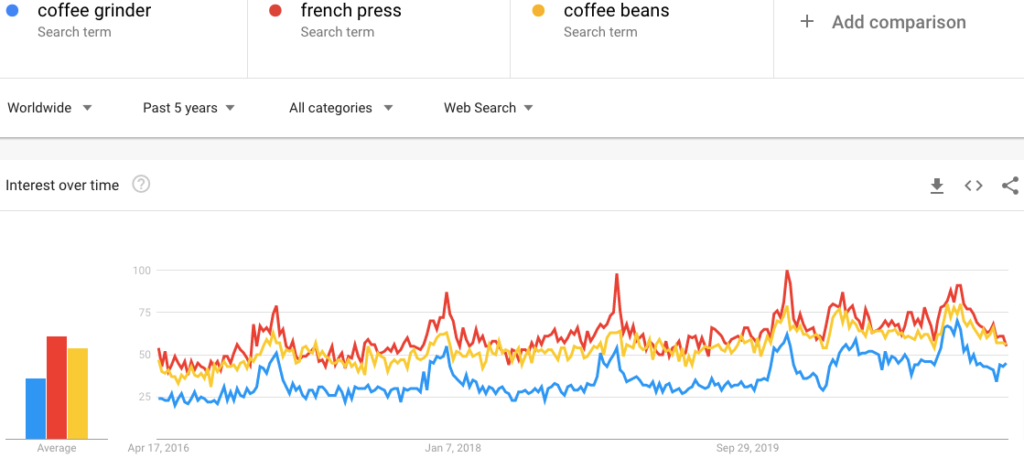
Best of all, there’s a truly giddying array of coffee products and equipment available. The more invested you become, the more you’ll learn, and the more gear you’ll crave.
Got a coffee maker? How about a home espresso machine with a built-in grinder next? After that, you must buy yourself a roaster so you can start roasting your own beans at home.
That makes coffee products and gear a highly attractive niche.
The only minor concern is that true fanatics really know their coffee terminology. If you’re an outsider, they’ll spot you from a mile off.
4. Golf Equipment
Again, I’m hardly reinventing the wheel when I say golf is a valuable market.
But there’s a lot of compelling evidence to suggest it’s a niche that’s worth getting into right now:
- In the UK, golf participation climbed by 65 percent year on year in October 2020.
- The number of rounds booked online in the UK and Ireland in September 2020 doubled year on year.
- In 2018, the number of people aged six and up who played at least one round of golf on a course in the US climbed to 24.2 million—the first measured increase in over a decade.
As you likely already know, golf isn’t exactly a pick-up-and-go sport. If you want to play, you need to buy a lot of (pretty expensive) gear.
That means there’s a lot of money to be made. The global golf equipment market was worth $6.85 billion in 2020 and is expected to grow to $7.6 billion by 2025.
While golf is a notoriously seasonal sport, we can still see clear upturns in search interest for a variety of golf-related products:
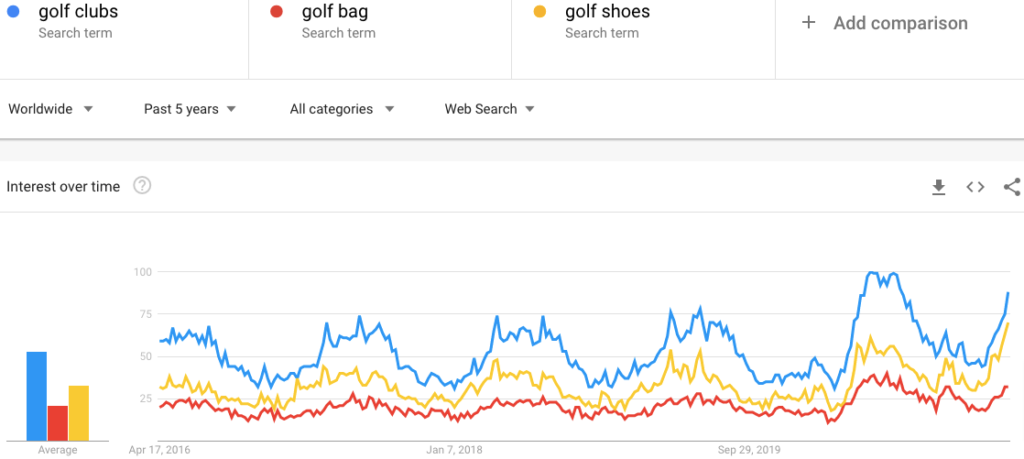
Plus, like with coffee, the more serious you are about golf, the more products you’ll buy. You might upgrade your clubs, kit out your wardrobe with golf clothing, and buy gadgets like rangefinders and swing trackers. Plus you’ll always need more balls and tees.
That means even though a set of clubs might last for years, there’s still a lot of opportunity for repeat business.
5. Home Gym Equipment
Sticking with the health and fitness theme, home gym equipment has been another recent boom area. It felt like everyone (who could afford it) went out and bought a Peloton during the lockdown.
Clearly, the pandemic has helped the fitness equipment market. After all, if you want to work out but you can’t go to the gym, what alternative do you have but to invest in your own kit?
However, it’s worth noting that the market was already on an upward trajectory before any of us had ever heard of Covid-19. It was valued at $11.5 billion in 2019 and is expected to reach $15.2 billion by 2027.
When you look at the Trends graph for three types of home gym equipment, you’ll immediately see when lockdown kicked in—it’s the bit where the lines all point straight up:
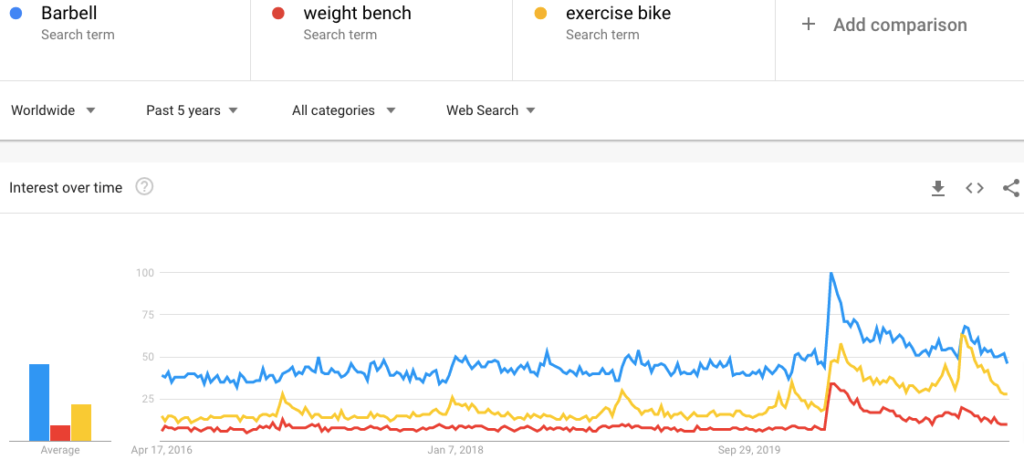
As you’ll notice, interest has unsurprisingly dropped off since those first heady days of the pandemic. But it’s still well above previous levels—particularly the term “exercise bike”, which has seen search interest double over the past five years.
6. Home Office Equipment
In a similar vein, here’s another ecommerce niche that’s received a shot in the arm from the pandemic.
With close to 40 percent of people currently working in the EU switching to full-time remote work as a result of the pandemic, home office equipment is in big demand.
Presumably, a lot of us will eventually head back to the office in some way, shape, or form. But it’s a fair bet that some level of home working is here to stay.
A survey of close to 1,000 company directors conducted in September 2020 found that 74 percent would be sticking with increased home-working even after the pandemic is behind us.
Unsurprisingly, home workers aren’t going to put up with sitting cross-legged on their bed with a laptop forever. It’s terrible for your posture, and it’s hardly an environment that screams “productivity”.
Instead, they want to create dedicated home offices, which is fueling demand for equipment like desks, ergonomic chairs, and computer stands:
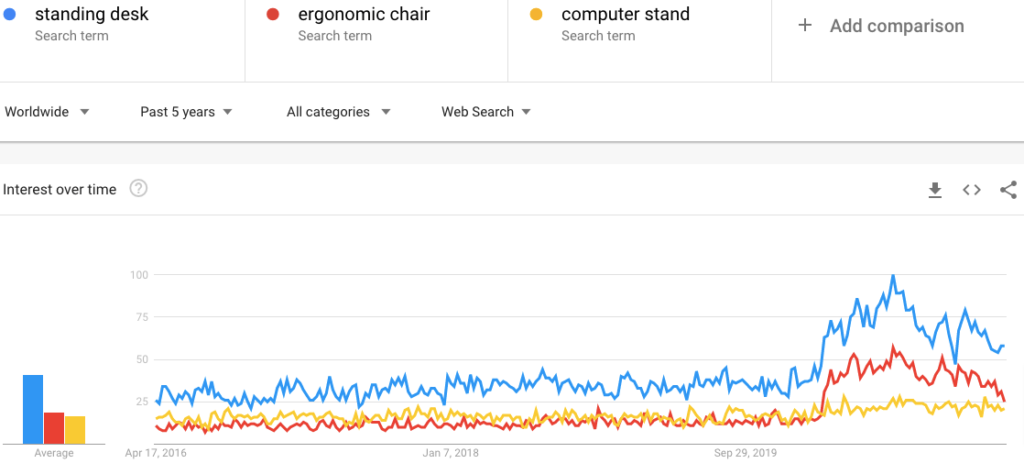
So it’s no surprise that the global home office furniture market is expected to grow at a CAGR of around 7.5 percent during 2020-2026. That makes this a pretty attractive niche to get into right now.
7. Kitchen Appliances
We’ve all had to get used to eating out a whole lot less over the past year.
This has led to a change in consumer habits. For instance, only about 3-4 percent of grocery spending in the US was online before the pandemic, but that’s since surged to 10-15 percent, according to research by Bain & Company.
But it’s not just the physical act of buying food that’s changed. We’re all looking to soup up our kitchens, too.
At one point during the lockdown, it seemed like everyone became obsessed with home baking, which is reflected in a general uptick in search interest for the term “bread maker” over the past five years.
Not only that, but terms like “pasta maker” have been on an upward trajectory too:
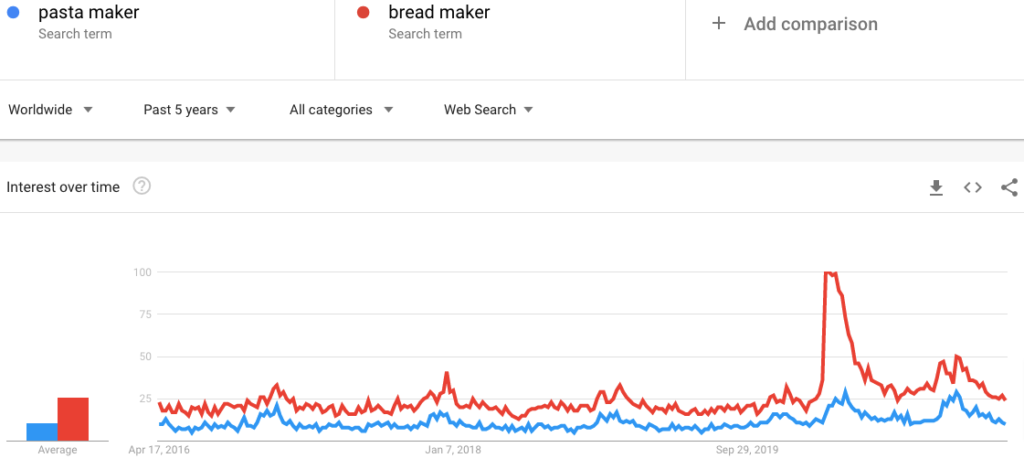
It seems we’re embracing this change in behavior, and are looking to support our newfound passion for cooking by investing in kitchen hardware.
Indeed, the kitchen appliances market was valued at $237 billion in 2019 and is expected to exceed $377 billion by 2027, representing a CAGR of six percent from 2020-2027.

Conclusion
Of course, I don’t expect you to read this article, pick one of these seven niches, and immediately start a new ecommerce business.
I based this article on global data, which means it doesn’t take local ecommerce trends into account.
For instance, here’s the same trends graph I used in the home gym equipment section, but localized to New Zealand:
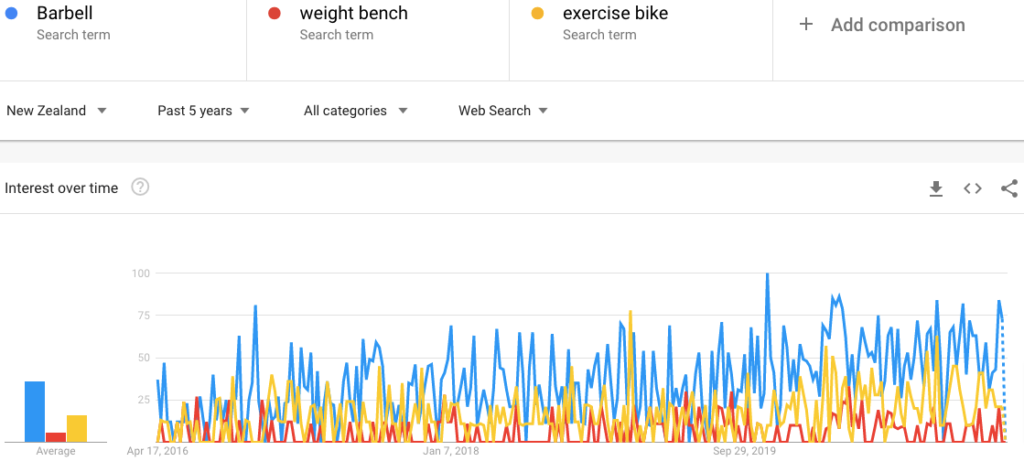
As you can see, the post-coronavirus uplift is a lot less pronounced here, because New Zealand fared comparatively well during the pandemic and spent less time in lockdown than a lot of other countries.
My point here is obvious but important: Do your due diligence.
Research your preferred niche from as many angles as possible. Identify and analyze your potential competitors. Gauge the size of the market. And where possible, niche down even further.
The more you specialize, the less competition you’ll face.



